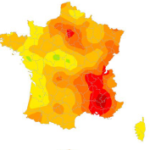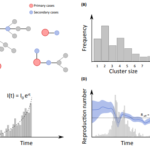Link to Pubmed [PMID] – 30055089
Link to DOI – 10.1111/irv.12599
Influenza Other Respir Viruses 2018 11; 12(6): 772-779
Maps of influenza activity are important tools to monitor influenza epidemics and inform policymakers. In France, the availability of a high-quality data set from the Oscour® surveillance network, covering 92% of hospital emergency department (ED) visits, offers new opportunities for disease mapping. Traditional geostatistical mapping methods such as Kriging ignore underlying population sizes, are not suited to non-Gaussian data and do not account for uncertainty in parameter estimates.Our objective was to create reliable weekly interpolated maps of influenza activity in the ED setting, to inform Santé publique France (the French national public health agency) and local healthcare authorities.We used Oscour® data of ED visits covering the 2016-2017 influenza season. We developed a Bayesian model-based geostatistical approach, a class of generalized linear mixed models, with a multivariate normal random field as a spatially autocorrelated random effect. Using R-INLA, we developed an algorithm to create maps of the proportion of influenza-coded cases among all coded visits. We compared our results with maps obtained by Kriging.Over the study period, 45 565 (0.82%) visits were coded as influenza cases. Maps resulting from the model are presented for each week, displaying the posterior mean of the influenza proportion and its associated uncertainty. Our model performed better than Kriging.Our model allows producing smoothed maps where the random noise has been properly removed to reveal the spatial risk surface. The algorithm was incorporated into the national surveillance system to produce maps in real time and could be applied to other diseases.



